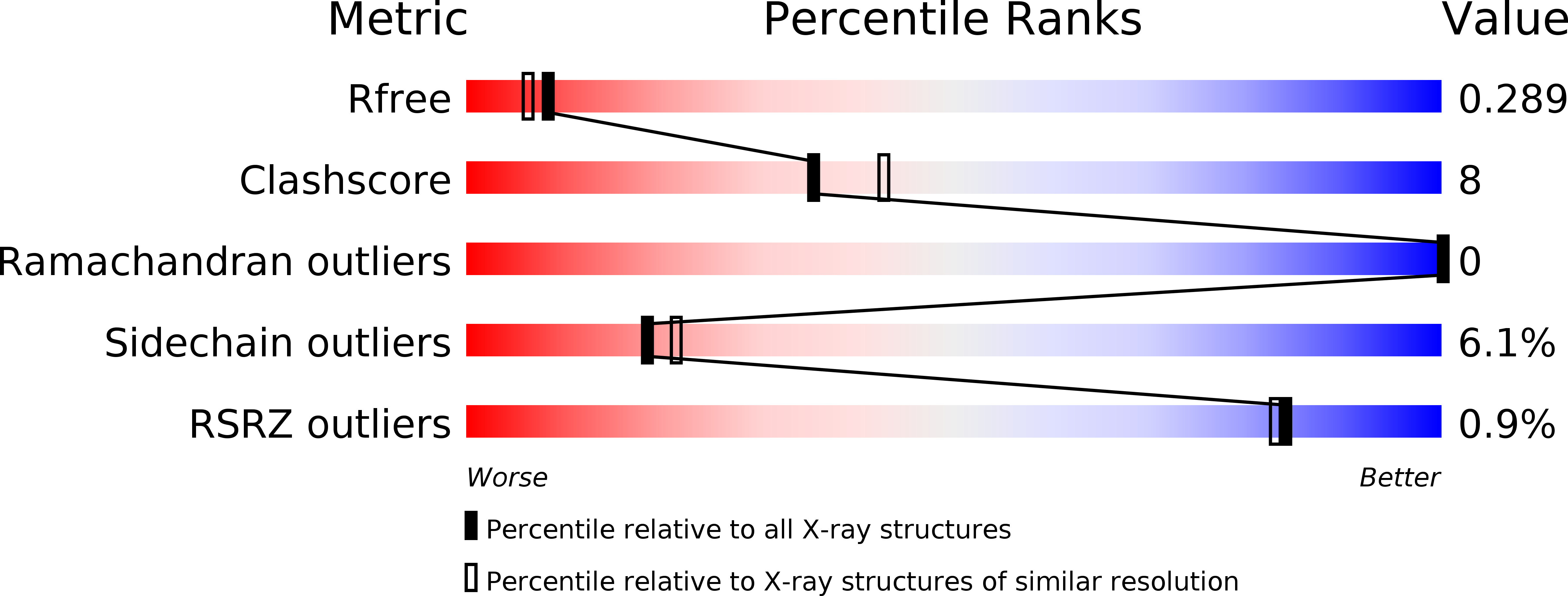Crystal structures of Flavobacterium glycosylasparaginase. An N-terminal nucleophile hydrolase activated by intramolecular proteolysis.
Guo, H.C., Xu, Q., Buckley, D., Guan, C.(1998) J Biol Chem 273: 20205-20212
- PubMed: 9685368
- DOI: https://doi.org/10.1074/jbc.273.32.20205
- Primary Citation of Related Structures:
2GAC, 2GAW - PubMed Abstract:
Glycosylasparaginase (GA) is a member of a novel family of N-terminal nucleophile hydrolases that catalytically use an N-terminal residue as both a polarizing base and a nucleophile. These enzymes are activated from a single chain precursor by intramolecular autoproteolysis to yield the N-terminal nucleophile. A deficiency of GA results in the human genetic disorder known as aspartylglycosaminuria. In this study, we report the crystal structure of recombinant GA from Flavobacterium meningosepticum. Similar to the human structure, the bacterial GA forms an alphabetabetaalpha sandwich. However, some significant differences are observed between the Flavobacterium and human structures. The active site of Flavobacterium glycosylasparaginase is in an open conformation when compared with the human structure. We also describe the structure of a mutant wherein the N-terminal nucleophile Thr152 is substituted by a cysteine. In the bacterial GA crystals, we observe a heterotetrameric structure similar to that found in the human structure, as well as that observed in solution for eukaryotic glycosylasparaginases. The results confirm the suitability of the bacterial enzyme as a model to study the consequences of mutations in aspartylglycosaminuria patients. They also suggest that further studies are necessary to understand the detail mechanism of this enzyme. The presence of the heterotetrameric structure in the crystals is significant because dimerization of precursors has been suggested in the human enzyme to be a prerequisite to trigger autoproteolysis.
Organizational Affiliation:
Department of Biophysics, Boston University School of Medicine, Boston, Massachusetts 02118-2526, USA. hguo@med-biophd.bu.edu















